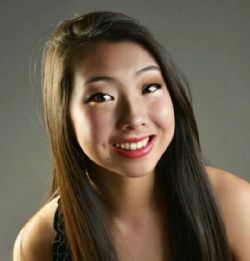|
Symphony
SRS SEASON ENDS WITH RESOUNDING TA-TA-TA-BANG
by Terry McNeill
Sunday, June 1, 2025
Symphony
YOUTHFUL VIRTUOSITY ON DISPLAY AT USO'S MAY CONCERTS
by Peter Lert
Saturday, May 17, 2025
Symphony
MYSTICAL PLANETS AND LIVELY GERSHWIN ORTIZ AT FINAL SRS CONCERT
by Peter Lert
Sunday, May 4, 2025
Symphony
VSO'S CONCERT MUSIC OF TIME, MUSIC OF PLACE
by Peter Lert
Sunday, April 27, 2025
Choral and Vocal
VOCAL ELEGANCE AND FIRE AT THE 222'S RECITAL APRIL 26
by Pamela Hicks Gailey
Saturday, April 26, 2025
CANTIAMO SONOMA SINGS AN INSPIRED GOOD FRIDAY MOZART REQUIEM CONCERT
by Pamela Hicks Gailey
Friday, April 18, 2025
DRAMATIC SHOSTAKOVICH SYMPHONY CLOSES PHILHARMONIC'S 25TH SEASON
by Terry McNeill
Sunday, April 13, 2025
LARGE COLLEGE OF MARIN AUDIENCE GREETS STOPHER ARTISTRY
by Terry McNeill
Saturday, April 5, 2025
Chamber
FRISSON DELIVERS SHIVERS OF DELIGHT
by Abby Wasserman
Sunday, March 30, 2025
OLD AND MOSTLY NEW IN SRS MARCH CONCERT IN WEILL
by Peter Lert
Saturday, March 22, 2025
|
 |
 Pianist Sophia Sun |
SUN'S WARM RECEPTION IN A CHILLY HALL
by Terry McNeill
Sunday, January 10, 2016
Program design for a piano recital is most often a decision to perform a few big sonatas and variations, sometimes by one composer, or a smorgasbord of shorter works. Sophia Sun chose mostly the latter in her local debut recital Jan. 10 before 150 in SRJC’s Newman Auditorium.
Sponsored by the Sonoma County branch of California Music Teachers Association, the hall was sprinkled with piano teachers and students, and Ms. Sun began with the big Bach Chromatic Fantasy and Fugue (S. 903). It was a performance based on finger dexterity rather than architectural strength and baroque warmth, and it was an unsteady start that perhaps was augmented by the hall having no heat. The pianist took too much time to begin the Fugue that allowed a disruptive burst of audience applause.
The afternoon’s only extended work was Beethoven’s E Major Sonata, Op. 109, a glorious three-movement Sonata that demands of the pianist introspection, warm cantabile and no small amount of fantasy. The best playing came in the six variations of the finale that rose to a strong climax before subsiding into a quiet return of the theme. The fugue was labored and left-hand passages too loud for good balance.
Before intermission the “Young Juliet” section of Prokofiev’s Op. 75 “Ten Pieces” was played, the themes generated by the composer’s ballet from 1937. It was jaunty and beguiling pianism with a chaste and tender ending, balancing deftly the sketch-like parts.
Four pieces comprised the second half, with Rachmaninoff’s Elegie in E from 1887 the only rarity. The Liszt Concert Etude in F (La Leggierezza) was first, played at a far too timid tempo (but with one delicious inner voice) that later worked well with the Rachmaninoff. Dropped notes aside, the Elegie lacked the last ounce of restful lyricism that constitute the piece, even in the loud part before the coda.
Schubert’s E Flat Impromptu (Op. 90, No. 3) was the penultimate piece, and Ms. Sun played it well and made the most of the contrasts in the mid section and the seductive finger passages in the outer sections. The artist fashioned a chaste and alluring ending, holding the audience in silence.
The seminal Chopin G Minor Ballade opened with just the right drama, tension and release of tension. Chopin’s four Ballades tell semi-secret stories and this interpretation unfolded with promise until technical problems with messy right-hand octaves and those pesky memory slips intruded. The playing in thematic statements and in repitions could have been slowed down for clarity while still keeping the emotional impact. Drama doesn’t have to be loud and fast to be thrilling.
Throughout the recital Ms. Sun addressed the audience with verbal program notes, and at the end (there was no encore) she spoke of her youthful musical training with what must have been inspirational examples for the many students that cheered her. With the specialized education audience Ms. Sun could have talked less and illustrated at least some of her commentary at the piano, increasing general understanding.
In addition to the hall’s chilly temperature the program was plagued by small production problems, mainly due to the lack of College staff during fall class break : the lack of a microphone that rendered talk from the stage too distant for understanding, not enough programs; stage lighting that didn’t work, and an out-of-tune and poorly voiced house piano. There was little tonal bloom in the instrument that has for years flaunted a beautiful treble.
|
